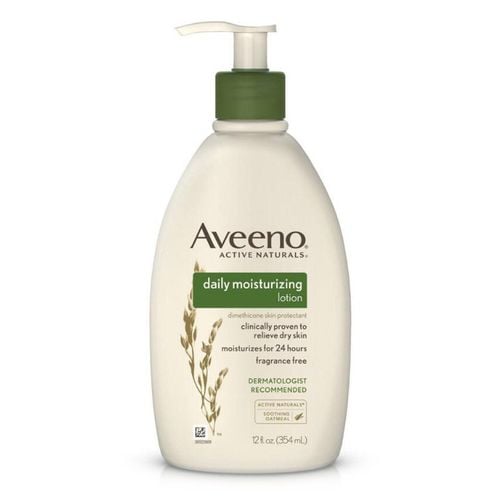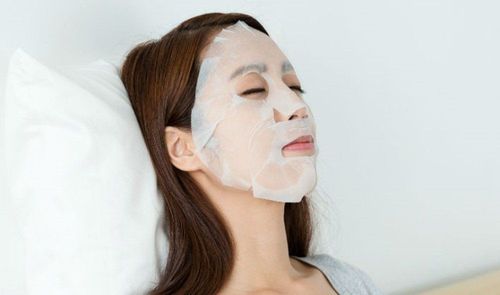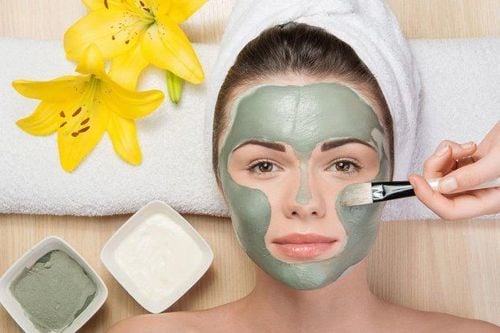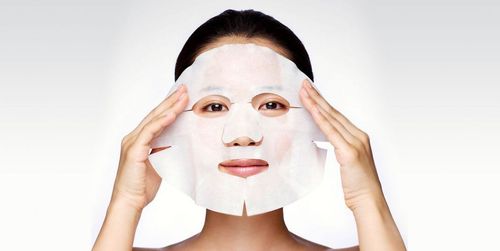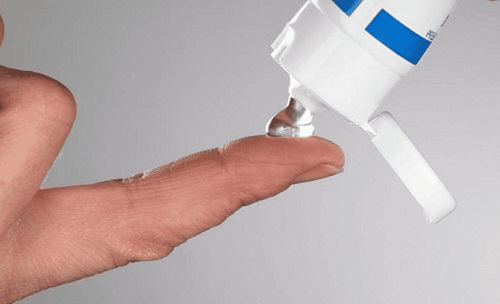This is an automatically translated article.
In the past, we often thought that skin care was only through creams, but today, under the wonderful effects of masks, new beauty trends have gradually become more diverse. So in the beauty care methods, is the beauty method through the mask good?
1. What is the effect of wearing a mask?
Is it good to wear a mask? The use of a mask completely depends on two factors: the type of mask and the skin condition as well as the wishes of the user.
Masks are an effective method for skin care, most masks contain a variety of ingredients with intensive care, nourishment and treatment effects for the skin in a highly concentrated form. The mask effect is obtained through the direct contact of the mask ingredients with the skin for a certain period of time, usually about 10-20 minutes. This is just enough time for the nutrients to penetrate the skin's surface and take effect.
Although masks can quickly correct inflammation and dry patches, these benefits are temporary and users often have to combine them with other specialized skin care products to maintain skin moisture. On the other hand, wearing a mask can still bring some risks to the skin such as causing dryness, irritation, redness and acne. Therefore, it is up to the user's purpose to determine the type of mask and the components inside that are most suitable.
SEE ALSO: After exfoliating, should I apply a mask?
2. Choose nutrient ingredients according to each skin type
To choose the right mask, users need to determine their skin type and choose the right mask ingredients. This is especially important and determines whether the mask is good or not because the right ingredients for the skin will help solve the problems in the most effective way.
2.1. Acne or inflamed skin
Although masks are not a long-term acne treatment, they can help soothe inflamed skin instantly and prevent breakouts. Masks containing salicylic acid, benzoyl peroxide, and natural ingredients like yogurt and papaya can help remove dead skin cells and pore-clogging substances. In addition, oatmeal and aloe are ingredients that have a soothing effect on the skin while the clay and activated charcoal mask can absorb excess oil on the skin.

Một tác dụng của mặt nạ chính là ngăn ngừa mụn
2.2. Dark skin
Users who are having problems with dark skin should look for masks containing vitamin C, which is a reliable ingredient capable of preventing hyperpigmentation. Besides, Kojic acid, azelaic acid and licorice root also work to lighten the skin, preventing patches of hyperpigmentation on the skin. Some other exfoliating ingredients like alpha hydroxy acid (AHA), lactic acid and pineapple will help remove dark spots on the surface of the skin.
2.3. Dry skin
Dry skin needs a lot of moisture, which means users need to use masks that contain a lot of hyaluronic acid to retain water. In addition, some other moisturizers that can be used such as avocado or shea butter can also soften and smooth the skin.
2.4. Skin with many wrinkles
Deep wrinkles on the skin often require the help of a dermatologist, however some masks can help minimize the appearance of wrinkles. Besides the effect of preventing skin tanning, vitamin C is an ingredient that can prevent wrinkles quite effectively. This vitamin is an antioxidant that boosts collagen production and helps firm skin.
Vitamin E is another effective anti-aging option alongside resveratrol and ferulic acid. These ingredients work to protect the skin from factors that cause wrinkles, such as environmental pollution and sun damage.
2.5. Oily skin
Anything that helps remove excess oil and helps reduce pore congestion is ideal for oily skin. Users should look for masks containing ingredients such as:
Salicylic Acid; Glycolic acid; Sulfur; Activated charcoal. In terms of natural ingredients, you can choose yogurt and pineapple to exfoliate the skin.
MORE: How often to use masks in your skin care routine
3. Choose the right type of mask
The main ingredients of the mask need to be suitable for each user's skin type. There are many different types of masks, but choosing is often easy because ingredients and mask types often go hand in hand.
3.1. Mud mask
This is a mask that can be suitable for all skin types with a deep cleansing effect. Although, this type of mask is relatively similar to the clay mask, but because it is made from water, the moisturizing ability will be better.
Different mud mask recipes will include different ingredients, but most will include some type of acid and natural fruit extracts.
3.2. Clay mask
Cosmetologists said that clay masks are rich in minerals, so they have the ability to restore skin very well. Currently, there are 2 main types of clay masks, kaolin clay and bentonite clay, both of which work to remove excess oil on the skin, very suitable for both oily and acne-prone skin. However, users should be aware that clay masks can be a bit drying, so dry skin types may not be suitable.
3.3. Activated charcoal mask
Currently, there is little evidence to support the use of activated charcoal masks. However, since activated charcoal has been used to absorb toxins inside the body, it is thought that activated charcoal masks can also remove dirt and other impurities from the surface of the skin.
3.4. Cream or gel mask
With hyaluronic acid as the main ingredient, thick cream masks can be great for dry skin because hyaluronic acid is a healthy moisture supplement.
Besides, the composition of the gel mask often includes cucumber and aloe vera with the ability to soften and soothe the skin, so it is ideal for people with sensitive skin.
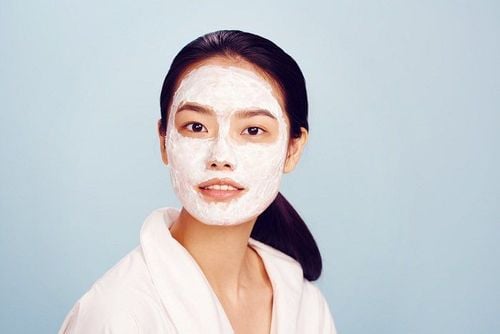
Mặt nạ dạng kem phù hợp với trường hợp sở hữu làn da dầu
3.5. Exfoliating Mask
Chemicals with exfoliating effects like glycolic acid and lactic acid are the main ingredients in this mask. These mild acids work to remove dead cells that accumulate on the surface of the skin, revealing brighter and smoother skin.
3.6. Enzyme Mask
Natural enzymes derived from fruits like pineapple and papaya are an effective exfoliator. The special advantage of this mask is that it does not cause irritation, helps the skin to be even and brighter.
3.7. Peel off mask
With a rubber-like construction that is easy to remove, these masks are best suited for those who don't like the hassle.
Peel off mask can be suitable for different skin types. Some contain glycolic acid and salicylic acid, which offer exfoliating and acne-fighting abilities. Others contain more moisturizing hyaluronic acid or antioxidants like vitamins C and E.
3.8. Mask paper
This is a popular mask in Korea, most of them contain hyaluronic acid, ceramides and antioxidants, so applying a sheet mask brings high moisturizing ability, restores the skin barrier and prevents skin damage. free radicals. This type of mask is especially good for:
Dry skin; Inflamed skin; Skin with many wrinkles.
3.9. Sleeping mask
This type of mask is suitable for night use so it is called a sleeping mask and they have a very strong moisturizing effect. The ingredients of the sleeping mask include AHA, turmeric and shea butter. When exposed to the skin for many hours, these ingredients can produce many benefits for the skin of the user.
MORE: Is lettuce mask good and should be applied daily?
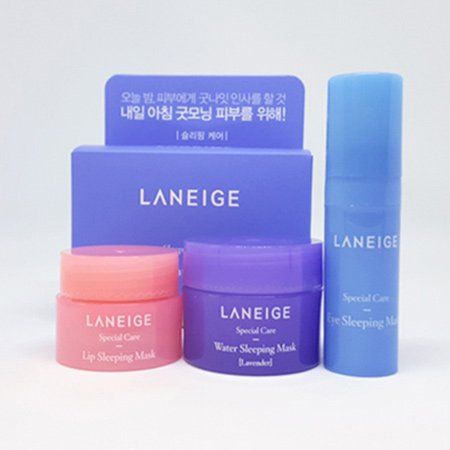
Mặt nạ ngủ là một loại mặt nạ sử dụng vào ban đêm
4. Some ingredients in masks should be avoided
Although masks contain a lot of beneficial ingredients, some additional ingredients can cause irritation. To limit red or dry skin, users need to check the ingredients to find substances that can cause bad reactions with the skin. Such substances may include:
Fragrance; Alcohol; Parabens; Food coloring; Oil. People with sensitive or easily irritated skin such as psoriasis need to be extra careful when using the mask. At that time, patients should not abuse masks containing drying ingredients and strong exfoliants (such as salicylic acid or retinoids).
Besides, the person wearing the mask should be careful with other medications to see if there are any side effects affecting the skin. Typical examples include prolonged use of corticosteroids that can thin the skin, and some antibiotics and antihistamines that increase skin sensitivity to the sun. These effects, coupled with strong masking, can harm rather than help the skin.
5. Notes when applying a mask at home
Maskers can experience many side effects from using DIY (Do It Yourself) skin care techniques. However, if the rules are followed, applying a mask at home is still safe and effective. A very simple operation is to apply a small amount of mask ingredients to the skin behind the ears to check for unwanted reactions before applying to the face.
5.1. Some ingredients to use
Users who want to exfoliate and brighten the skin can use lactic acid found in milk and yogurt. Aloe vera and fruits like papaya can also lighten the skin.
For someone who wants to soothe inflamed skin, turmeric can be a great choice. Coughs for dry skin can be remedied with natural ingredients like honey and avocado.
5.2. Ingredients to Avoid
Maskers should stay away from any acidic ingredients like apple cider vinegar, lemon and lime juice... as they can lead to irritation or even skin burns.
Masking with egg whites is also a bad idea, as this can lead to infection, especially when there is an open wound. Some highly alkaline ingredients like baking soda can also be irritating to the skin.

Lòng trắng trứng có thể không đạt tác dụng trong việc đắp mặt nạ
5.3. Mask type and frequency of use
The frequency of masking depends on the mask formula and the skin type of the person applying it. For example, people with sensitive skin should only apply a mask once a week to avoid trouble.
However, masking will be most perfect when users carefully read the instructions for use. Some masks, such as clay masks and moisturizing formulas, can be safely used 2 or 3 times a week. Others like exfoliating masks or anti-aging products should only be used once a week to avoid irritation.
5.4. Some other notes to optimize the masking effect
Users who have found the right mask formula and frequency of use can apply some simple tips and tricks to optimize the effect of the mask:
Clean the skin before proceeding. moisturizing skin with mask:
Clean skin thoroughly before applying any kind of mask; Use a mild and neutral pH moisturizing cleanser, rinse with warm water to open pores, ready for masking; After removing the mask, use a thick, oil-free moisturizer and hyaluronic acid to minimize potential irritation and keep mask ingredients on the skin longer. Persistence and can use multiple masks at the same time:
Using a mask only once will not bring results. Regular use can help users achieve their goals; Need persistence and determination to use the same mask for at least 6 to 8 weeks; If there are many skin problems and want to save time, users can apply a variety of masks. For example, some areas of the skin need exfoliation while others need oil control. Do not apply the mask for too long: Users may mistakenly believe that the longer the mask is on, the more effective it is. This is completely wrong because each mask has a specific use time, so do not use it longer than directed. A mask is only applied for 10 minutes, but prolonged use for 1 hour can increase discomfort.
Price does not dictate quality: The most expensive mask is not necessarily the best. Some masks will not be suitable for the user's skin and that may not have much to do with the price but depends entirely on the ingredients inside.
There is no such thing as a miracle mask, besides wearing a mask, using a daily cleanser, moisturizer and sunscreen is much more important to a beautiful skin.
Please dial HOTLINE for more information or register for an appointment HERE. Download MyVinmec app to make appointments faster and to manage your bookings easily.
Reference source: healthline.com




